Office Cctv Installation
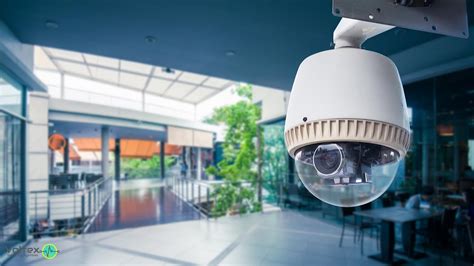
In today's business landscape, ensuring the safety and security of your office premises is paramount. One effective measure to achieve this is through the installation of Closed-Circuit Television (CCTV) systems. Office CCTV installation not only acts as a deterrent against potential security threats but also provides valuable surveillance and monitoring capabilities. This comprehensive guide will delve into the intricacies of office CCTV installation, offering expert insights and a step-by-step approach to help you make informed decisions and implement a robust security solution.
Understanding the Importance of Office CCTV Installation
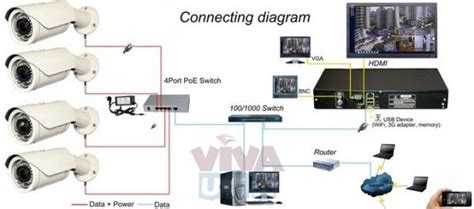
The significance of office CCTV installation goes beyond the obvious benefits of deterring criminal activities and capturing evidence. It plays a pivotal role in creating a secure environment for both employees and assets. By strategically placing CCTV cameras, businesses can enhance overall security, mitigate risks, and ensure the well-being of their workforce.
Furthermore, the data collected through CCTV surveillance can be instrumental in optimizing operational efficiency. For instance, analyzing foot traffic patterns can help businesses make informed decisions about office layout and design, leading to improved productivity and employee satisfaction. The insights gained from CCTV footage can also be leveraged to enhance security protocols and emergency response plans.
Assessing Your Office’s Security Needs
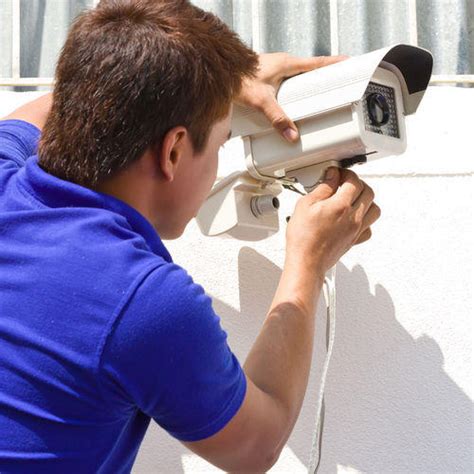
Before embarking on the office CCTV installation process, it is imperative to conduct a thorough assessment of your security requirements. This involves evaluating potential security vulnerabilities, identifying high-risk areas, and understanding the unique challenges posed by your office environment.
Identifying Security Risks
Every office space presents its own set of security risks. These may include theft, vandalism, unauthorized access, or even internal threats such as data breaches. By identifying these risks, you can prioritize the placement of CCTV cameras and develop a tailored security strategy.
| Security Risk | Potential Impact |
|---|---|
| Theft | Financial loss, disruption of operations, damage to reputation |
| Vandalism | Property damage, increased insurance costs, negative public perception |
| Unauthorized Access | Breach of confidentiality, potential data loss, physical harm to employees |
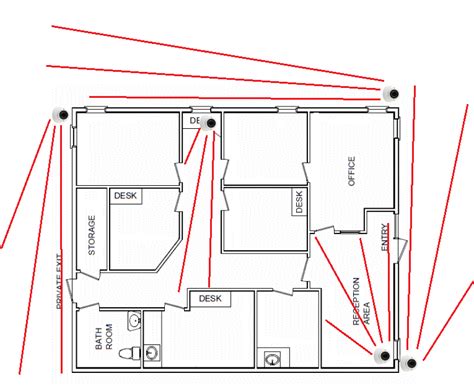
Evaluating Office Layout and Design
The physical layout of your office plays a crucial role in determining the optimal placement of CCTV cameras. Factors such as the number of floors, entrance and exit points, high-traffic areas, and blind spots all influence the effectiveness of your security system.
For instance, entrance and exit areas should be closely monitored to prevent unauthorized access and ensure the safety of employees and visitors. High-traffic areas, such as reception desks or lobbies, may require multiple cameras to capture a comprehensive view. On the other hand, blind spots or areas with limited visibility should be identified and addressed to prevent potential security breaches.
Choosing the Right CCTV Equipment
Selecting the appropriate CCTV equipment is a critical step in the installation process. With a plethora of options available in the market, it is essential to choose cameras and systems that align with your specific security needs and budget.
Camera Types and Specifications
CCTV cameras come in various types, each designed for specific purposes. Some common types include:
- Bullet Cameras: Compact and discrete, ideal for indoor and outdoor use.
- Dome Cameras: Low-profile design, offering a wide field of view and resistance to vandalism.
- PTZ (Pan-Tilt-Zoom) Cameras: Highly versatile, allowing remote control and adjustment of camera angles.
- Thermal Cameras: Detect heat signatures, useful for monitoring in low-light or complete darkness.
- IP Cameras: Digital cameras that transmit data over a network, offering high-resolution footage and advanced features.
When selecting cameras, consider factors such as resolution, field of view, night vision capabilities, and weather resistance. For example, IP cameras with 4K resolution and wide dynamic range (WDR) can provide exceptionally clear footage, even in challenging lighting conditions.
Storage and Recording Options
Determining how and where to store CCTV footage is a critical decision. There are several options available, each with its own advantages and considerations:
- Digital Video Recorders (DVRs): Traditional method of storing footage locally on a hard drive. Offers ease of use but may require regular maintenance and has limited storage capacity.
- Network Video Recorders (NVRs): More advanced option, storing footage on a network-attached storage (NAS) device. Provides scalability, remote access, and advanced features like motion detection and video analytics.
- Cloud Storage: Offers off-site storage, ensuring data security and accessibility from anywhere. However, it may require a stable internet connection and ongoing subscription fees.
Professional Installation and Setup
While some businesses opt for DIY CCTV installation, it is highly recommended to engage the services of professional installers. They possess the expertise and tools necessary to ensure a seamless and effective installation process.
Hiring a Reputable CCTV Installation Company
When selecting a CCTV installation company, consider factors such as their reputation, experience, and expertise in the field. Look for companies that have a proven track record of successful installations and positive customer reviews.
Additionally, ensure that the company is licensed and insured, providing you with peace of mind and protection in case of any unforeseen issues. A reputable installer will offer comprehensive services, including site surveys, customized security solutions, and ongoing support and maintenance.
Site Survey and Customized Security Plan
A thorough site survey is an essential step in the installation process. It involves a detailed assessment of your office space, including its layout, lighting conditions, and potential security vulnerabilities. Based on this survey, the installation company will develop a customized security plan tailored to your specific needs.
The security plan should outline the recommended camera positions, coverage areas, and any additional security measures such as access control systems or alarm integration. It should also provide a detailed timeline and budget for the installation process.
Camera Placement and Coverage
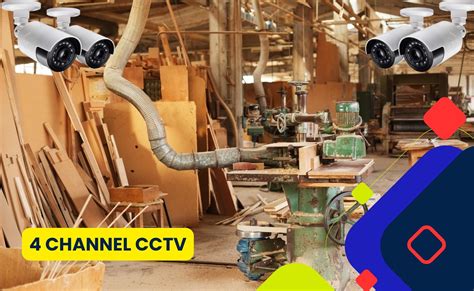
Strategic camera placement is crucial to ensure effective coverage and maximize the benefits of your CCTV system. Consider the following guidelines when determining camera positions:
Entrance and Exit Points
Entrances and exits are critical areas that require close monitoring. Place cameras at these locations to capture clear footage of individuals entering and exiting the premises. This not only helps with access control but also provides valuable evidence in case of any security incidents.
High-Traffic and Sensitive Areas
Identify areas within your office that experience high foot traffic or house sensitive assets or information. These could include reception areas, server rooms, warehouses, or cash handling points. Ensure these areas are adequately covered by CCTV cameras to deter potential threats and monitor activities.
Blind Spots and Hidden Areas
Blind spots or areas with limited visibility can be potential hiding places for intruders or areas where security incidents may go unnoticed. Identify these spots and strategically place cameras to ensure complete coverage. Consider using cameras with wide-angle lenses or PTZ capabilities to capture a broader field of view.
CCTV System Configuration and Testing
Once the cameras are installed, the next step is to configure and test the CCTV system to ensure its optimal performance.
Network Configuration and Integration
If you have opted for an IP-based CCTV system, the installer will configure the network settings, ensuring seamless connectivity and data transmission. This involves setting up IP addresses, configuring network switches or routers, and establishing secure connections.
For integration with other security systems, such as access control or alarm systems, the installer will ensure proper communication and synchronization between the different components.
Camera Calibration and Testing
Each camera should be calibrated to achieve the desired field of view, focus, and image quality. This process involves adjusting camera settings, such as exposure, white balance, and contrast, to ensure optimal performance in various lighting conditions.
Thorough testing of each camera is essential to identify any potential issues or blind spots. The installer should conduct a comprehensive test, simulating various scenarios and verifying the coverage and quality of the footage.
Ongoing Maintenance and Support
Office CCTV installation is not a one-time project but an ongoing commitment to ensuring the security and safety of your premises. Regular maintenance and support are crucial to keep your CCTV system in optimal condition.
Scheduled Maintenance Checks
Schedule regular maintenance checks with your CCTV installation company to ensure the system’s longevity and performance. These checks should include inspecting cameras for any physical damage, cleaning lenses, and checking for loose connections or faulty components.
During maintenance checks, the installer should also verify the functionality of the recording equipment, ensuring that footage is being captured and stored correctly.
Upgrades and System Enhancements
As technology advances and your security needs evolve, it may be necessary to upgrade or enhance your CCTV system. Regular reviews and assessments can help identify areas where improvements can be made, such as increasing camera resolution, adding additional cameras, or integrating advanced analytics features.
Your installation company should provide recommendations and guidance on system upgrades, ensuring that your security solution remains up-to-date and effective.
Conclusion: Enhancing Office Security with CCTV
Office CCTV installation is a powerful tool in the arsenal of any business aiming to create a secure and safe environment. By understanding your security needs, choosing the right equipment, and engaging professional installers, you can implement a robust CCTV system that provides comprehensive surveillance and monitoring capabilities.
Remember, a well-designed and maintained CCTV system not only deters potential threats but also contributes to the overall well-being and productivity of your workforce. It is an investment in the long-term security and success of your business.
What are the legal considerations for office CCTV installation?
+
Office CCTV installation must comply with local privacy laws and regulations. Ensure you obtain any necessary consent from employees and visitors, and display appropriate signage indicating the presence of CCTV cameras. Consult legal experts for guidance on specific requirements in your jurisdiction.
How long does it take to install an office CCTV system?
+
The installation time varies depending on the scale and complexity of the project. A typical office CCTV installation can take anywhere from a few days to a week, including site surveys, equipment procurement, and actual installation. More extensive projects may require additional time.
Can I access CCTV footage remotely?
+
Yes, many modern CCTV systems offer remote access capabilities. By connecting your CCTV system to the internet, you can access live feeds and recorded footage from anywhere using a secure login. This feature is particularly useful for remote monitoring and off-site security management.
How long should I retain CCTV footage?
+
The retention period for CCTV footage varies depending on local laws and your internal policies. Generally, it is recommended to retain footage for at least 30 days, but some industries or jurisdictions may require longer retention periods. Consult legal experts and industry best practices for guidance.



